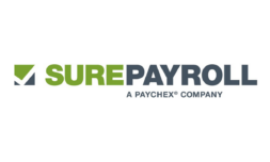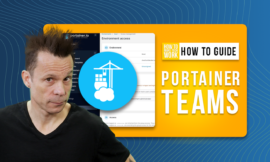Act!’s fast factsOur star rating: 3.5/5 Pricing: Starts at $30 per user per month, billed annually. Key features:
|
Act! is a contact manager turned customer relationship management software and marketing solution. The software is simple and has a client-first approach to managing and tracking customer engagement and sales opportunities. Act! has time management features that ensure each user or salesperson can access notes, tasks, information and appointments either in the office or on the go for effective selling.
Act! markets itself as a solution most ideal for small to midsize businesses. Since the CRM software features Act! offers are generally basic sales and marketing automation tools, there are some alternatives to also consider before making a decision to invest in a single provider.
Pricing
- Free trial: No credit card or download required for a 14-day free trial.
- Cloud-based: $30 per user per month for CRM + Marketing Automation.
- Cloud-based w/ desktop sync: $40 per user per month for CRM + Marketing Automation.
- On-premises: $37.50 per user per month for CRM + Marketing Automation.
- AMA Select: Get 25,000 emails to unlimited contacts for $70 per account per month.
- AMA Complete: Get 50,000 emails to unlimited contacts for $199 per account per month.
- AMA Advanced: Get 100,000 emails to unlimited contacts for $399 per account per month.
- Add-ons: Get additional cloud storage for $5 per month or enhanced support or custom tables for $10 per user per month.
Key features of Act!
Template editor and workflow designer
Act! has over 170 sample templates to use for marketing content (Figure A). Users can select a preset template or import an existing one into the software’s HTML editor. Users can create and edit content for mobile-friendly emails, newsletters or other marketing materials with an easy-to-use drag and drop tool that can be shared with entire teams. These templates help organizations step up their marketing efforts with cohesive branding and messaging.
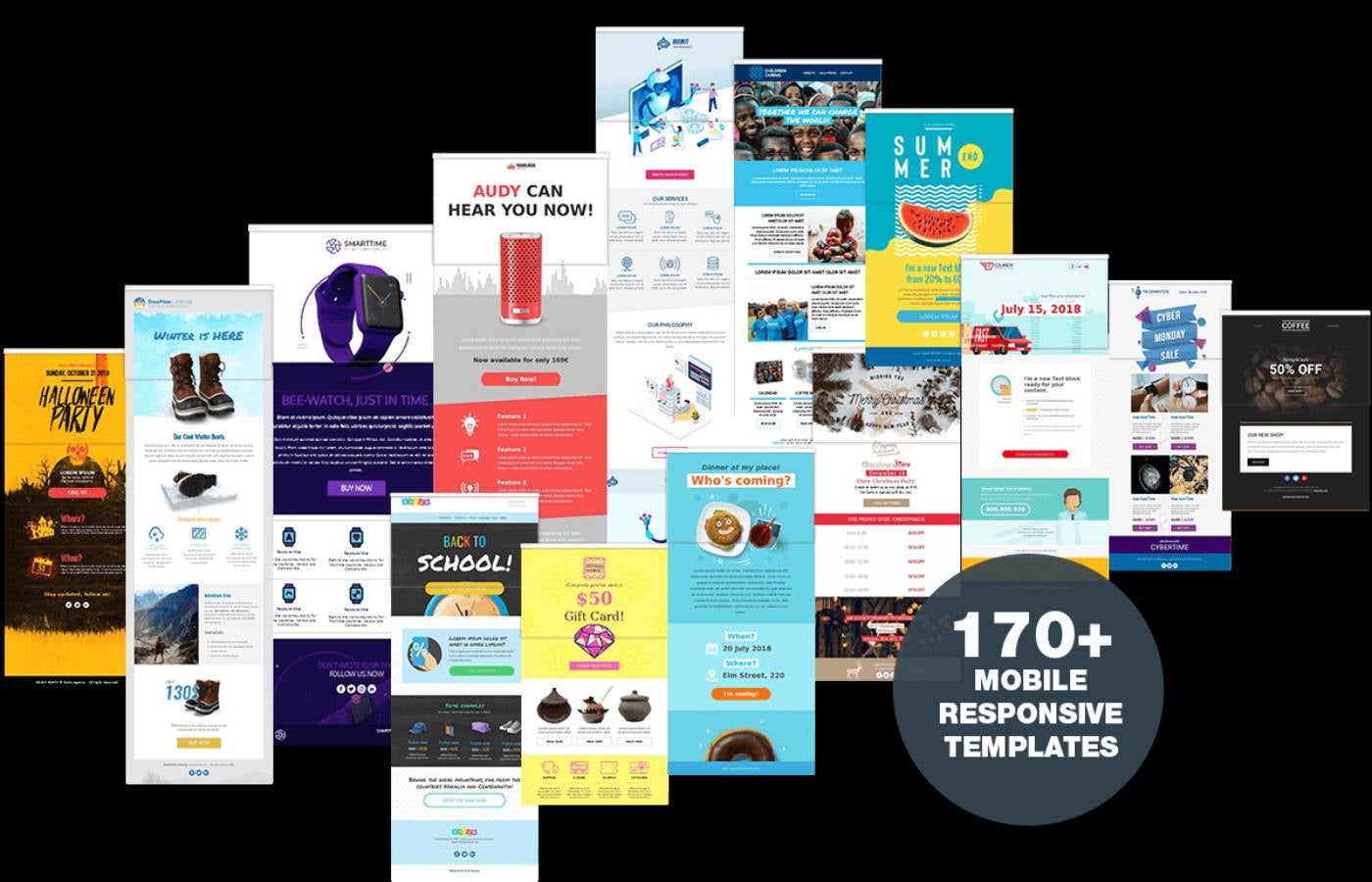
Landing pages and forms
Sales and marketing teams can use a template or start from scratch to create a branded landing page or intake form for a website (Figure B). These landing pages can be uploaded and used to capture new leads. Leads submit information requested on the landing page in exchange for a subscription to a survey or newsletter, such as name, job title and email address. This feature captures and funnels new leads into the Act! database as new contacts with follow up activities automatically assigned.
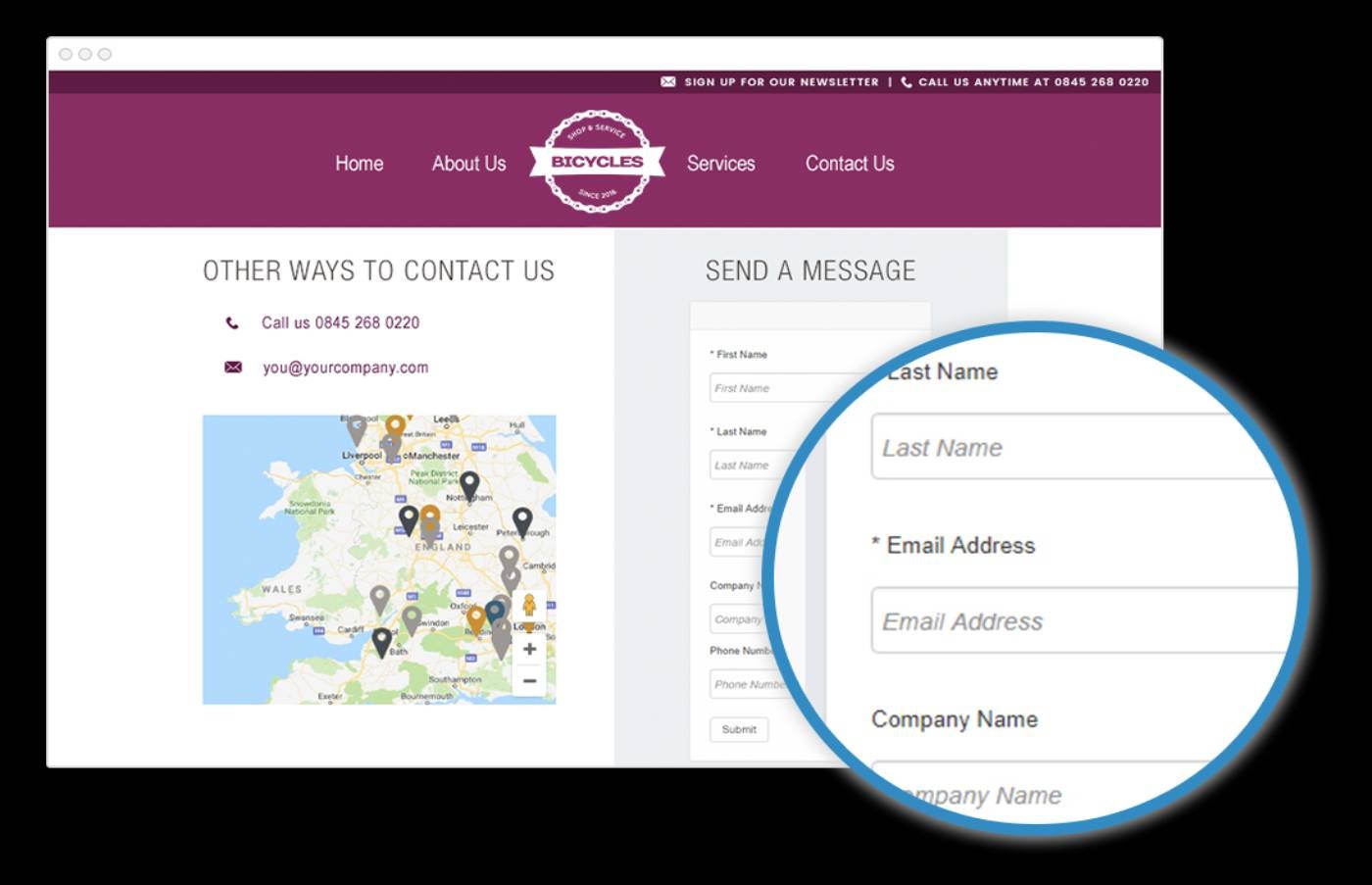
Prioritized task lists
Users and admins can manage all sales activities with Act! prioritized task list (Figure C). This helps individual users and sales reps know exactly where to focus their efforts throughout the workday or week. Users are then reminded of miscellaneous admin tasks like document follow up or sales actions like cold calling blocks. Having a task list with automated prioritization, helps reps reduce time spent on just organizing tasks.
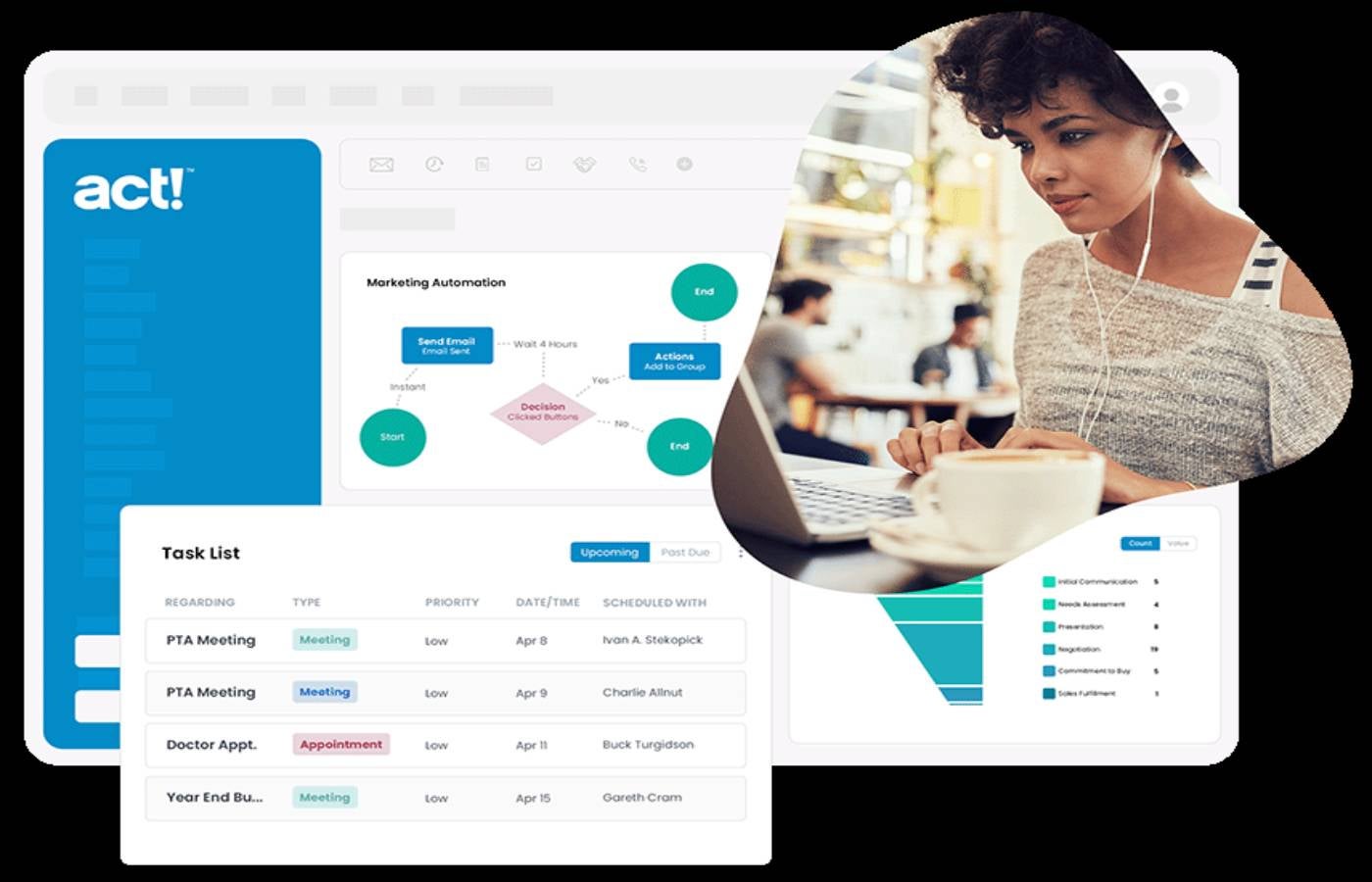
Sales pipeline management
Act! sales pipeline management includes opportunity tracking, pipeline and sales process management, and access to actionable insights (Figure D). Users can access and track all incoming leads and projects. Admin users can even assess pipelines by product, territory, sales stage or agent to have full transparency. These visualizations ultimately help organizations view progress and strategies from a birdseye view while giving insights into details.
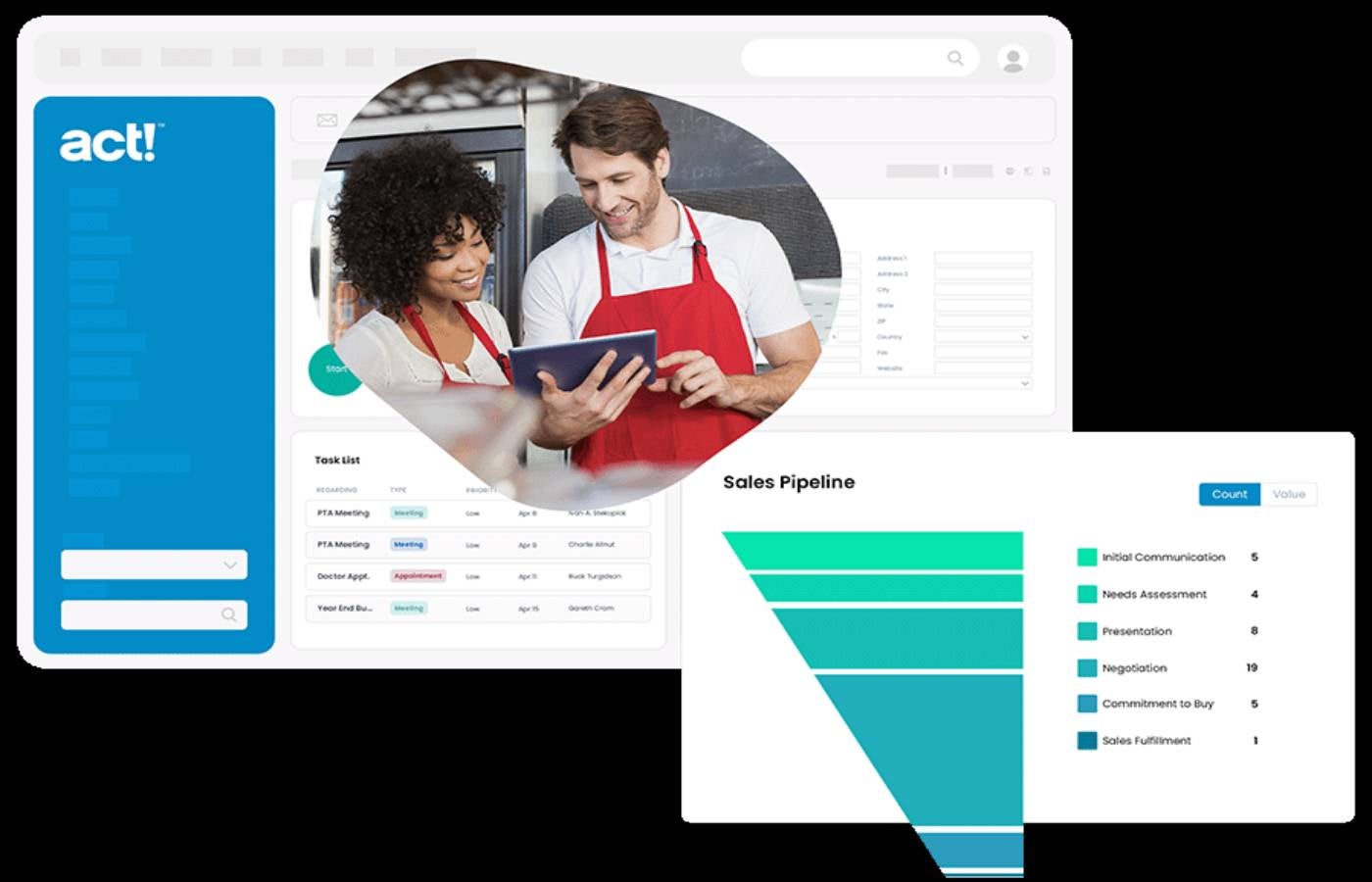
Act! pros and cons
| Pros | Cons |
|---|---|
|
|
Alternatives to Act!
Since Act! markets the CRM solution to small and midsize businesses, it makes sense to compare it to other popular SMB CRMs such as Salesforce and HubSpot that have similar pricing and core features. Act! also focuses on its sales and marketing features, making it comparable to Zoho CRM and that platform’s top multichannel marketing tools.
Act! lines up well compared to these bigger-name competitors when it comes to industry standards on what users expect out of a basic customer relationship management tool.
| Software | Act! | Zoho CRM | Salesforce | HubSpot |
|---|---|---|---|---|
| Pipeline management | Yes | Yes | Yes | Yes |
| Custom dashboards | Limited | Limited | Yes | Limited |
| Integrations | Yes | Yes | Yes | Yes |
| Free-for-life option | No | Yes | No | Yes |
| Free trial | 14 days | 15 days | 30 days | None |
| Starting price* | $30 per user per month | Free starting price | $25 per user per month | Free starting price |
* Pricing details are based on annual subscription rates.
Zoho CRM
Zoho CRM is another strong CRM software with tools that can house both the sales and marketing efforts of any organization, similar to Act! Zoho’s multichannel marketing integrates with all the major social media platforms and funnels high-value leads into the platform for sales reps to begin engaging and nurturing. Zoho CRM’s marketing automations are more robust than Act! Zoho CRM also has a basic free-for-life option for smaller organizations wanting to experiment with a CRM software beyond a trial or demo.
SEE: Check out our complete individual review of Zoho CRM.
Salesforce
Salesforce is a powerful software with reporting dashboards, multiple pipeline managers and even built-in phone dialers. Salesforce offers more advanced reporting and analytic features than Act! This makes Salesforce a better option for organizations with complex sales cycles. With its many paid tiers, the CRM platform is scalable for organizations of different sizes.
SEE: For more information, explore our full review of Salesforce.
HubSpot
HubSpot isn’t an open source software itself, but with its robust integration capabilities, users can develop their own applications to integrate with the platform. Similar to Act!, some of the feature add-ons can be pricey, but HubSpot is another small, business-friendly software with a robust free tier. HubSpot’s free tier allows up to 2,500 users with more integration options for both native and third party applications, making it a very competitively priced option.
SEE: Read our complete review of HubSpot for a full breakdown of its offerings.
Review methodology
To review and critique Act!, I used an inhouse rubric to score the CRM software and its core offerings. Our rubric consists of defined criteria and subcriteria around the most important factors when evaluating any general CRM software. I relied on Act!’s own online resources in addition to real user feedback, scores and reviews.
The following is the breakdown of the criteria used to score Act!:
- Cost: Weighted 25% of the total score.
- Core features: Weighted 25% of the total score.
- Customizations: Weighted 15% of the total score.
- Integrations: Weighted 15% of the total score.
- Ease of use: Weighted 10% of the total score.
- Customer support: Weighted 10% of the total score.
Source of Article
